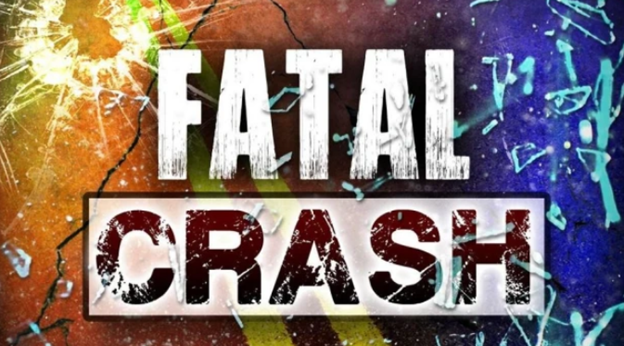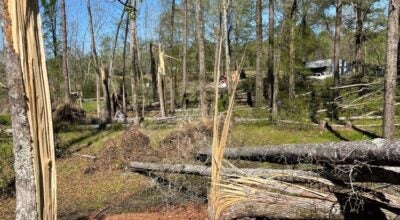‘It seemed like an uneventful day’
Published 12:42 am Saturday, September 11, 2010

010930-N-1328C-013 Aboard USS Theodore Roosevelt (Sept. 30, 2001) -- Captain Stephen Voestch, Commander of Carrier Air Wing One (CVW 1), Rear Admiral Mark Fitzgerald, Commander of Carrier Group Eight (CCG 8), Captain Richard J. O'Hanlon, Commanding Officer of USS Theodore Roosvelt (CVN 71) are assisted by Damage Controlmen as they fold the first American flag to be raised above "ground zero" at the site of the attack on New York's World Trade Center. The flag was presented to the crew of USS Theodore Roosevelt (CVN 71) and will be flown with pride during their current deployment. -- U.S. Navy Photo by Chief Photographer's Mate Eric A. Clement.
SELMA — Dave Davies got up around 6:30 a.m. Tuesday, Sept. 11, 2001, just like he did every other day for that first cup of coffee and to check the news to see what had happened overnight. He would report to the Beaufort Marine Corps Air Station, where he, a Navy Petty Officer 2nd class, worked as an electronics and weapons air warfare specialist.
“It looked like an uneventful day,” he said. “The weather was nice.”
Little did Davies know his life would change shortly after he arrived on the base in South Carolina.
He had an eye appointment that morning on base — a regular annual checkup. As he finished his appointment, somebody came in and said it looked like an airplane hit the World Trade Center in New York City.
“They had a TV in there, so we turned it on and were watching it a little bit,” Davies said. “I said, ‘damn, that looks like a pretty good fire.’ Then, you saw the second one hit the World Trade Center — the other tower. Then I said, ‘that wasn’t an accident.'”
At that time, Davies and about 1,300 others who worked on the base didn’t know the full measure of the jets that rammed into the twin towers. Later, he and the nation would hear about the coordinated suicide attacks by al-Qaeda — the two commercial jet liners hijackers intentionally crashed into the World Trade Center, a third commercial airliner taken over by hijackers and crashed into the Pentagon in Arlington, Va., just outside Washington and a fourth plane crashed into a field near Shanksville, Pa., after some of its passengers and flight crew tried to take control of the plane from the highjackers. Nobody on the four flights survived.
Davies went to his house on the base to return their only car to his wife. He knew he’d not see home for many hours, if what he suspected was true. When he arrived home, his wife Maggie and 4-year-old daughter were glued to the television. Thankfully, Davies said, his daughter didn’t realize what had happened. Tears rolled down Maggie’s cheeks as she asked him what happened.
“I don’t know,” Davies answered, “but if you want the car, you’d better take me to work.”
Back at the base on the operations side, Davies said, “My maintenance officer and our gunner, which is in charge of the ordinance people came up to me and said, ‘we need to talk to you.’ I was like, ‘OK what do you want to talk to me about?’ They said, ‘we don’t want a lot of people to hear.’ I said, ‘OK.'”
The conversation that followed in an office behind a closed door focused on a single question: “Which one of our airplanes can we use to shoot missiles?”
Davies told them any plane that had a valid seven-day inspection. His officers dismissed Davies and told him to go back to his area and prepare for a meeting in about an hour.
Back at the shop people looked at Davies, who said only to go back to work and there would be a meeting later. They worked a little while. As Davies and his crew prepared for the meeting a presidential helicopter landed nearby — one of many Davies believes was dispatched to different airfields that day.
“So I kind of looked at that and said, ‘hey, that’s cool. That’s not something you see everyday.'”
At the meeting, the maintenance officer told everyone, Davies said, “We don’t know what’s going on. We don’t know what’s happening. They’re going to close the base at 4 p.m. If any of you guys need rides to pick you up and they can come pick you up, they’d better do it at 3 p.m. We’re shutting down the base. Very few people will be left here.”
Davies and his crew prepared a couple of aircraft.
“They took them away and brought them back and they had a couple of missiles on them. By this time, they were already letting people go. And they asked again, ‘Will these aircraft be OK to shoot down aircraft if need be?'”
Davies confirmed the status of the aircraft for his officers.
“I really didn’t want that happening, but I said, ‘yeah, if need be. Yes, it can be done,'” he said. “They’re like, ‘OK you can go ahead and go on home.'”
Those two aircraft flew over Washington, D.C.
At home, all Davies saw was dazed faces. He tried to contact family members who worked for the National Security Agency and others who worked for various airlines. He couldn’t find anyone, but his mom, who said his dad was at work at the NSA. She told Davies his brother, who also worked for the NSA, was at the Pentagon but nobody had heard from him.
“I kinda of went hmmm. We really didn’t know anything. We knew what happened, but we didn’t know anything — death tolls or anything. We knew the death tolls of those in the aircraft.”
Davies already was scheduled to leave on a deployment aboard an aircraft carrier six days later. That’s a very busy time. But training flights were cut back to maybe two at a time. Everything seemed to be in a holding pattern, but moving slowly forward to the cruise. The remainder of the week, everyone seemed in a daze.
Six days later, Davies was on an aircraft on his way to Norfolk, Va. to go aboard the USS Roosevelt. There was no chatter on the aircraft on that flight up to the port. “That was a rarity. We got on the ship, very somber,” he said. “That was a rarity. Nobody was talking about when we were coming back.”
The ship zig-zagged the Atlantic Ocean, north and south and south and north. They reached the Mediterranean and went through the Suez Canal. The crew of the Roosevelt was told because it’s hard for aircraft carriers to get through the canal, it would be a good time for an attack. Nobody was allowed on the deck.
Off the coast of Pakistan, Navy pilots flew three-to-four hours to Afghanistan, looking for al-Qaeda.
Davies returned home safely after finishing his mission. But he will never forget that day and those that followed when the nation was attacked and the military responded.
One of the most touching events during those days occurred aboard the Roosevelt when the ship’s company was presented with the flag the firefighters raised that day from the rubble that had been the twin towers. New York City firefighters brought the flag, which flew on every ship in the battle group.
Davies said he is proud to be an American and to have served his country.
“That was my job,” he said. “I did it and would do it again.”





